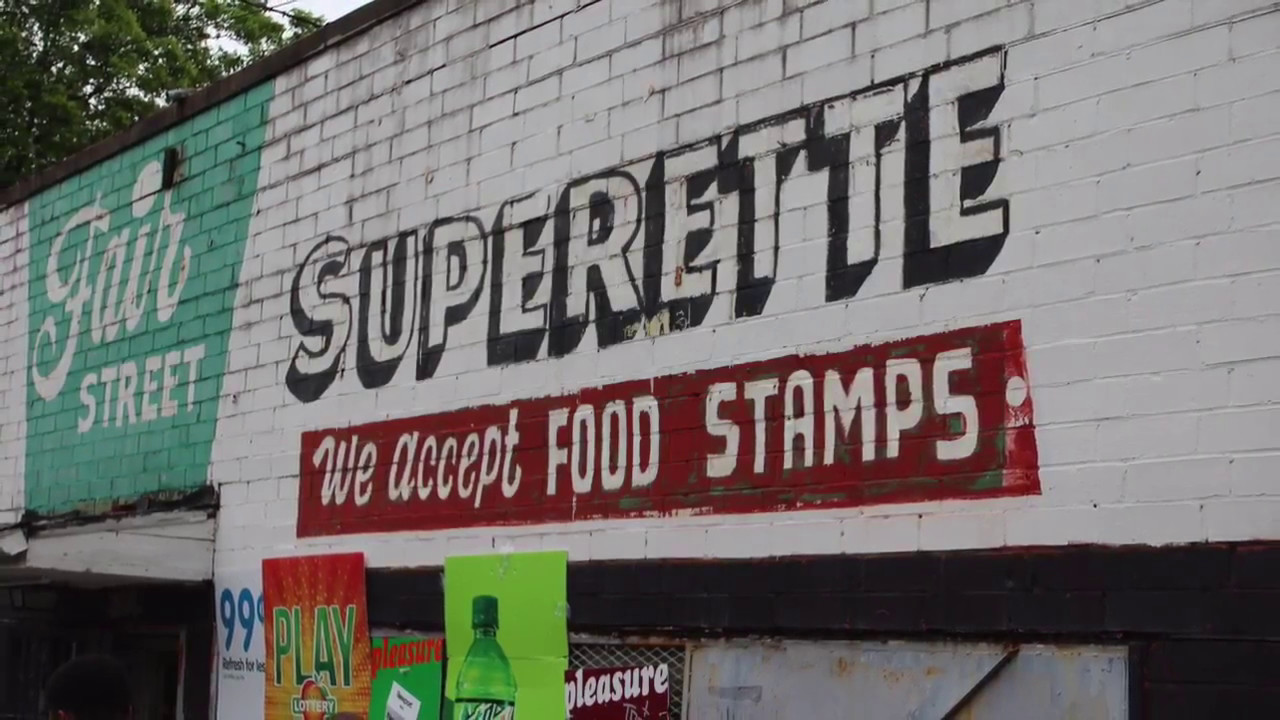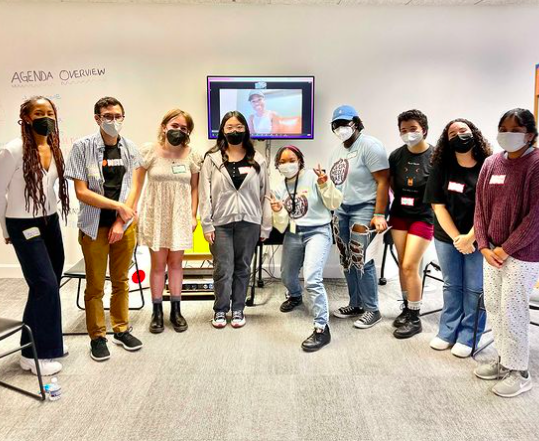We went three different different neighborhoods in Atlanta to break the bubble we were living in.
Christian explains…
We decided to do this project because we wanted to show people that poverty is not an issue that is far away from them; it is in their backyard. All of these neighborhoods were within 30 minutes of each other, but they were drastically different. We want to break the bubble that many wealthy people live in and show them that poverty is an issue that needs to be addressed.
Middle-Class Atlanta
Isaac reflects …
In Atlantic Station, Christian and I were mostly ignored. That doesn’t mean people were being rude; they just treated us with courteous detachment, passed off as another shopper, or someone’s kid and their friend who just got a camera.
First we walked around in the parking garage, taking pictures of the cars. This was the first time I saw the wealth in Atlantic Station, as the cars behind the residents’ chain-link fence were almost all sports cars. BMWs marked the corners and Mustangs were hiding with them. Not to mention, we saw a Corvette pulling into park next to a bright yellow Porsche. One of the ways I identify middle class is by spending, and the fact that people living in the building had these as their cars was not too surprising seeing as the apartments went for $300,000-$1,00,000, according to the sign outside the building.
The houses across the street were much more mellow. Although there was no neighborly talking going on outside, there was still a sense of trust, evidenced by how the homeowners left shoes and other things on their front porches. Also, every single house had security and showed it off with stickers, signs and security cameras. One the more modern things we saw was a solar panel in the street, showing off how modern and cool Atlantic Station is.
Lower-Income Atlanta
We decided to visit a neighborhood in the 30314 zip code because we looked on a website showing neighborhood and consumer data (Claritas) and saw it was a low-income area, where just under 50 percent of households had income of less than $25,000 per year and that hardly any households had high incomes.
Anna Claire reflects…
When we went to 30314, I wasn’t expecting to be as impacted as I was. Seeing how other people lived and how much less they had than I do, made me really think about what I have. Seeing how many houses were boarded up and the piles of trash outside in the yards opened my eyes, and I saw how fortunate I am. Everyone we ran into seemed very nice and said hi and asked us how we were doing, which was very unlike Buckhead or Atlantic Station. There was one grocery store in the neighborhood we visited, and we didn’t see any big stores or clothing stores or anything of the sort.
The neighborhood was only 12 minutes, by car, from Old Fourth Ward and Ponce City Market, but the people living in this impoverished area probably would have to go farther to find products they can afford. I was surprised by the elementary school here, because it seemed recently redone and nicer than Morris Brandon Elementary, an elementary school in Buckhead.
Isaac reflects…
Although it had rained before we arrived and was still misting at the time, our visit 30314 was great. It had a friendly environment, the people seemed genuinely interested in what we were doing by talking to us, and I learned so much from just walking around. As a wealthier person, I, too, thought of poverty as “over there” in a different state, or the other side of Atlanta, and in my earlier years on the other side of the world — certainly not 10 minutes away from my house and private school. While teachers were telling me this, I never really took it in and thought about it.
Walking around was a slap in the face, seeing the pawn shops, the sign on the only store that said they took food stamps, the brown and yellow mattresses in people’s yards, the broken glass everywhere, and crushed beer cans. It seemed like a movie set. In a way it was shocking, but I didn’t feel sorry and pity the people living there. Everyone at school told us to be very respectful and careful of how we presented ourselves while visiting a low-income neighborhood, but at no point did I feel threatened or did I feel anyone was resentful of us because of our privilege.
Upper-Class Atlanta
Anna Claire reflects…
In Buckhead, the environment was very different, and it felt more cold and unwelcoming. Seeing the castles hidden behind half a mile of driveway and a gate just gave Buckhead an unwelcoming vibe. While we were taking pictures, we were shown dirty looks and were even asked what we were doing in a condescending manner. The whole time we were there, Layney and I felt like we were trespassing and that we didn’t belong.
Atlanta’s Housing Facts
When we were researching for this project, what we found surprised us as a group. We researched facts about income in Atlanta from the Atlanta Journal Constitution, Forbes, Politifact Georgia, and real estate resources like Investopedia and Point2Homes, and we learned that 24.6 percent of people in Atlanta are living in poverty. So right now that would be around 114,114 people are impoverished in Atlanta.
We are all privileged kids, so seeing that the average house price was about $184,900 was a little shocking. We are used to growing up in and around Buckhead-sized houses and were surprised to see that the average was so much lower than what we were expecting. Seeing as the average median income for metro-Atlanta is $55,733, this shouldn’t have surprised us as much as it did. But we didn’t know what the average income was until we started this unit of study at school. When we would discuss median income, we would say $55,000 as if it weren’t a lot of money, even though it’s $10,000 more than the lowest end of Atlanta’s definition of middle class, which is $40,000-$140,000. We found ourselves thrust out of our bubble, which was really important and something that we wanted to do when we started this project.
Truth Hidden Behind Stereotypes
Layney reflects…
A common misconception I have heard a lot is the richer a neighborhood, the more welcoming it is. When we went to three different places with three drastically different classes, we found the opposite.
When we went to 30314, the people living there were very friendly. The first encounter we had with someone was a man in his car. He asked us how we were, what we were doing, and where we went to school all the while he had a giant, friendly smile on his face. People stopped for us when we crossed the street and waved goodbye. While walking, people would give us a polite nod and a grin. I felt like they welcomed me like their neighbor, and I left in a better mood than I came in with.
In 30327, people gave us weird glances wherever we went. They treated us like we didn’t fit in when they stared at our clothes and car. People stopped us and aggressively asked us what we were doing. The gates were closed with heavy-duty locks, giving us the impression we weren’t invited in.
By doing this project, I saw just how prominent the wage gap in Atlanta is. People in Buckhead were merely 30 minutes away from the lower-class neighborhood, yet their houses would tower over the ones in 30314. It opened my eyes to see how much it benefited to be rich. As a society, we need to be more aware of how income and class has an impact on our surroundings and how we treat other people.
Layney, Anna Claire, Christian and Isaac are 8th graders at The Paideia School, which has a curriculum focused on race, class and gender.




